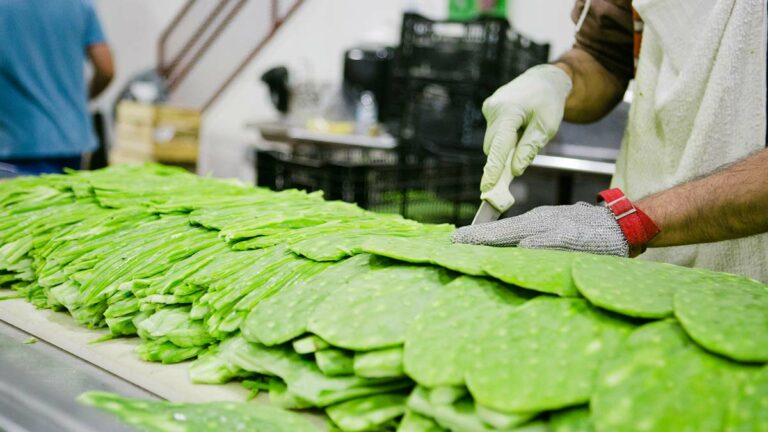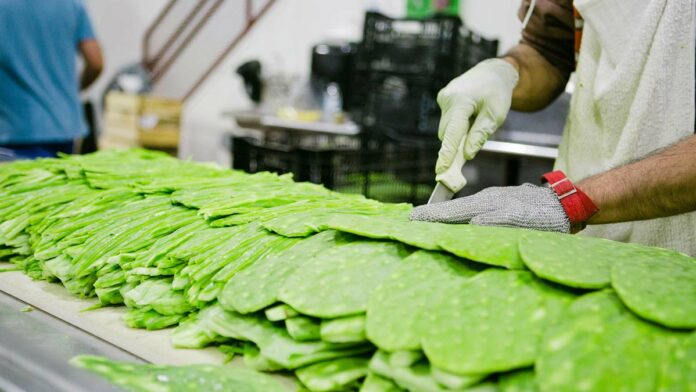EDITOR’S NOTE

One of the complaints I hear most often from locals about Santa Cruz County is that “there’s nothing happening on the food scene.” This isn’t literally true, but then, they don’t mean it literally. We all have our favorite dining spots, and our favorite locally produced foods, and would wail to high heaven if they suddenly disappeared (I am still wailing about Lou’s Cajun Kitchen). But we also get so used to our regular meal haunts that we start to take them for granted after a while, and when we hear about snappy new food trends elsewhere—smoke, algae, moringa, whatever—we wonder if and when we’re going to get a taste. So, what people are really saying when they complain about “nothing happening” is that they want to see bold new culinary ideas here.
The thing is, they are here. It’s great when there’s a high-visibility place to find them, like the Santa Cruz Food Lounge, but sometimes they’re hidden away. One of our food writers who has dedicated herself to finding them is Lily Stoicheff, who recently started writing the “Love at First Bite” column every other week in GT for that exact purpose. This week, she’s written about a little-known nexus of culinary experimentation in Santa Cruz, the Commercial Kitchen Incubator Program in Watsonville. Home to almost three dozen food start-ups over the last three years, this program from the El Pájaro Commercial Development Corporation is nurturing exactly the kind of innovative ideas locals say they want to see on our food scene. And the stories of the people behind these startups are often what you’d least expect. Let’s all support the foodies who are feeding both our stomachs and our thirst for the new.
STEVE PALOPOLI | EDITOR-IN-CHIEF
LETTERS TO THE EDITOR
Read the latest letters to the editor here.
Trust Betrayed
Re: “Posner Undisclosed” (GT, 3/9): You know that Santa Cruz has a housing crisis when our own city council member Micah Posner rents an illegal shed out of his backyard and doesn’t disclose the income because the unit is “unpermitted.”
Note to the voting public: no matter how “cool” your chosen politician appears to be, they generally don’t want to live under the same rules they would like to enforce upon the rest of us.
An elected official who votes for laws that restrict the housing market, while simultaneously benefiting from that same tight market by illegally renting a shed for $700 a month and then lying about it and hiding the income, epitomizes the corruption in government that the public is so angry about.
His actions are hypocritical, illegal, and dishonest, and they betray the public trust. Santa Cruz deserves better.
Richard Graves
Santa Cruz
Get Real
Re: “Posner Undisclosed”: I was amazed at the time spent explaining the Micah Posner cardinal sin of renting out a room for $700/month. The idea that such a thing could inspire any action at all demonstrates a clear lack of direction for our housing issues in Santa Cruz.
There is a significant housing shortage here. It hits renters, the single people and lower income people worst of all. Where are these people supposed to go when units like this are taken off the market? We need to get real—what happens to them?
It was cheap. $700 a month was a figure that Micah’s former tenant will not find elsewhere. I only hope that said tenant finds something that he/she can afford after being kicked out by the city.
There actually are some really squalid and abusive housing situations existing in Santa Cruz and Live Oak, and no one seems minimally interested in addressing these disgusting situations.
I find this ridiculous. We need to move on to the real issues.
Paula Barsamian
Santa Cruz
Online Comments
Re: Electoral College Local Talk
California has enacted the National Popular Vote bill. It would guarantee the presidency to the candidate who receives the most popular votes in the country. Every vote, everywhere, would be politically relevant and equal in every presidential election. No more distorting and divisive red and blue state maps of pre-determined outcomes. There would no longer be a handful of “battleground” states (where the two major political parties happen to have similar levels of support among voters) where voters and policies are more important than those of the voters in 38-plus states, like California, that have just been “spectators” and ignored after the conventions.
The National Popular Vote bill would take effect when enacted by states with a majority of the electoral votes—270 of 538. All of the presidential electors from the enacting states will be supporters of the presidential candidate receiving the most popular votes in all 50 states (and D.C.)—thereby guaranteeing that candidate with an Electoral College majority.
The bill has passed 34 state legislative chambers in 23 rural, small, medium, large, red, blue, and purple states with 261 electoral votes. The bill has been enacted by 11 jurisdictions with 165 electoral votes–61 percent of the 270 necessary to go into effect.
—Susan Anthony
PHOTO CONTEST WINNER

Submit to ph****@go*******.sc. Include information (location, etc.) and your name. Photos may be cropped. Preferably, photos should be 4 inches by 4 inches and minimum 250dpi.
GOOD IDEA
JUST FOR BREW
Tensions at UCSC and among alumni reached a boiling point after the university announced it would be changing the way the Stevenson Coffee House operates and launching a renovation. Administrators later clarified that they plan to introduce Jewish foods and that the kitchen would need remodeling. UCSC has announced feedback sessions to hear from the community at 1 p.m. on Tuesday, April 5 and 6 p.m. on April 6 at the Stevenson Coffee House.
GOOD WORK
GREEN PLAYER
And now a post from our Department of Shameless Self Promotion: Good Times is now a Green Certified Business, we found out last week. GT is the only green-certified newspaper in the county, according to the Monterey Green Business Program, which recognized our LEED-certified printer and energy-efficient office building, among other eco-friendly elements. There are 3,000 Certified Green Businesses in the state. For more information, visit montereybaygreenbusiness.org.
QUOTE OF THE WEEK
“Know your food, know your farmers and know your kitchen.â€
-Joel Salatin



 Plus Letters To the Editor
Plus Letters To the Editor Being at peace. Connecting with other people, and with nature.
Being at peace. Connecting with other people, and with nature.
 Picking grapes. I was just this young hippie at the time trying to put some money together, thinking I could do it. Halfway down one row I had cut myself 14 times.
Picking grapes. I was just this young hippie at the time trying to put some money together, thinking I could do it. Halfway down one row I had cut myself 14 times.





